This post is also available in: Italian
When it comes to wine, Piedmont is always a protagonist. Nonetheless, quoting Stefano Lorenzi, an arborist and tree-climber certified by SIA (Italian Society of Arboriculture), and an AIS (Italian Association of Sommeliers) sommelier AIS (Italian Sommelier Association): “We should not always and only talk about the “usual suspects” when dealing with wines from this Italian region. There are many other great wines coming from the luxuriant vineyards of this very part of Italy, and they’re definitely worth discovering and enjoying.”
Stefano has thus chosen three very special wineries, along a medium-range itinerary, spanning three very different and extremely interesting areas of Piedmont: the hills around Tortona, Ghemme, and Nizza Monferrato. Those three wineries combine history and traditions with state-of-the-art innovation, supported by true love and passion for good wine, the surrounding territory, and the natural environment.
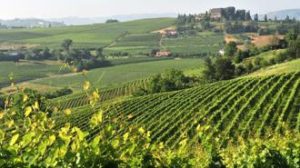
Colli Tortonesi – the hills around Tortona (AL): “This area has been considered almost a depressed one for decades – especially from the agricultural point of view – thus its true wealth of excellent wine production has always been kept in the shade», as Stefano Lorenzi says. This very territory embeds parts of Piedmont, Lombardy, Emilia-Romagna and Liguria. The hills are an actual extension of the Po Valley and a passage between the Alps and the Apennines. They feature a multi-faceted landscape, extremely beautiful and evocative. Soft hills slowly soar to peaks (such as Giarolo, Ebro, and Chiappo), stretching over a succession of cultivated fields, orchards (peaches, table grapes, plums, cherries, and strawberries), and fine vineyards.
The French writer Stendhal wrote about this very part of Italy as “…a splendid road, with eye-catching mountains in the lovely background…”. There are also many historical-architectural-artistic treasures to discover, including the castles of Pozzol Groppo and Brignano Frascata, both in excellent condition and the Studio -Museum of the painter Pellizza da Volpedo.
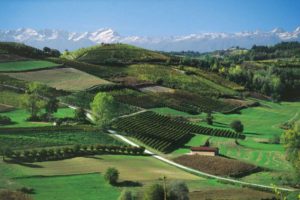
Ghemme (NO): this ancient village in the middle of the area around Novara, stands on the left bank of the Sesia River, near the border with the province of Vercelli and at the entrance to Valsesia. It used to be an important town in the Middle Ages, and it takes its name from the Agamini, a Celtic tribe that settled in the area, later called Pagus Agamin, and then Agamium by the Romans. Since 1994, it has been included in the “Cities of wine” directory; since 2002, Ghemme has also been listed among the “Cities of honey”. Overlooking the splendid panorama offered by the Mount Rosa mountain range, Ghemme is surrounded by rolling hills covered with woods and vineyards. There are several monuments of great artistic interest, including the castle, the church of San Rocco and the Castle of Cavegnano. Quite pretty, although not in excellent condition, is Giardino Gianoli public park.
The map shows the wineries and other locations included in our suggested itinerary. Distances are also mentioned, in order to make it easier and more practical for you to make your choice and save petrol and time.
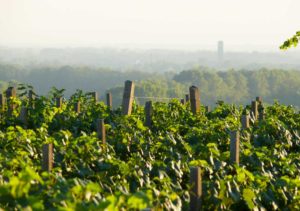
Cantina Rovellotti, in Ghemme (NO): Cantina Rovellotti, also known as “Antonello and Paolo Rovellotti”, has been part of the Ghemme Castle (NO) for 600 years and still makes wine in several small historic cellars, within the medieval stronghold.
The vineyards around Ghemme stretch over 62 acres on the hills around Novara: their position, exposed to alpine winds, is particularly suitable for the cultivation of the native varieties of Nebbiolo, Vespolina, Innominabile, and Bonarda – these grapes have thus found their ideal microclimate to develop incomparable aromatic features, also thanks also to the temperature range between day and night. The very acidic component of the soil makes the grapes quite unique: in fact, they provide a very specific character to the wine eventually produced by this winery. The clayey matrix, which can be found in the nearby Novara rice paddies, holds water like a sponge, boosting the growth of the bunches which appear quite large and with an optimal surface-skin ratio.
This winery has not used chemical additives for twenty years and the vineyards are managed as much naturally as possible, so much so that dragonflies and other beneficial insects have recently recolonized this area.
According to a painstaking harvest choice, the grapes can be used, alternatively, for the vinification of Ghemme D.O.C.G. and Ghemme D.O.C.G. Riserva, or of Colline Novaresi D.O.C. Nebbiolo, and Novara Hills D.O.C. red wine.
Distances to other wineries: 76 miles to Cascina I Carpini – 71,5 miles to Cascina Garitina.
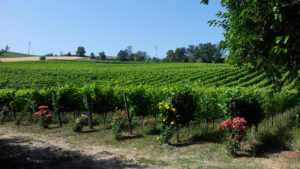
Cascina i Carpini
Water for the wine cellar is constantly purified with bacterial digesters and it is re-used after three months.
Distances to other wineries: 43 miles to Cascina Garatina – 76 miles to Cantine Rovellotti.
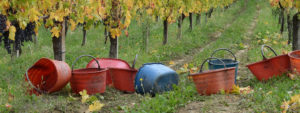
Azienda agricola Cascina Garitina, in Castel Boglione, Nizza Monferrato (AT): Cascina Garitina, in Castel Boglione – in the heart of Monferrato (AT) – was founded in 1900 as a family-run winery, now managed by its fourth-generation owner, Gianluca Morino. The name of the company comes from the great-grandmother Margherita whose diminutive “Margheritina” becomes “Garitina” in the local dialect. The activity of this winery is mainly focused on the enhancement of Barbera, namely the main vine of the company benefiting from the best exposure. In particular, the oldest vineyards (planted in 1939, 1951, and 1969) are dedicated to the production of Nizza wine, a type of Barbera with specific and strict techniques, only on the hills of the 18 municipalities around Nizza Monferrato, a particularly suitable area and the very birthplace of this wine.
The vineyards cover about 64 acres, planted with Barbera, Brachetto, Dolcetto, Pinot Nero, Merlot, and Cabernet Sauvignon grapes. Over the years, Gianluca Morino has constantly improved the management of the vineyard, trying to combine past experiences with modern production techniques: his endeavour has led to high-quality grapes and excellent wines. Cultivation and production are, in fact, carried out with the least possible impact on the environment, mimicking the very natural growth mechanisms and rhythms of nature (grassy rows, little mowings, thorough research on the local weather and its positive effects, etc.). Cascina Garitina uses screw caps on all the bottles, a sensible choice that avoids defective cork and contributes to dramatically reduce the stress on cork oak forests.
Distances to other wineries: 76 miles to Cascina I Carpini – 71,5 miles to Cascina Garitina.
This post is also available in: Italian


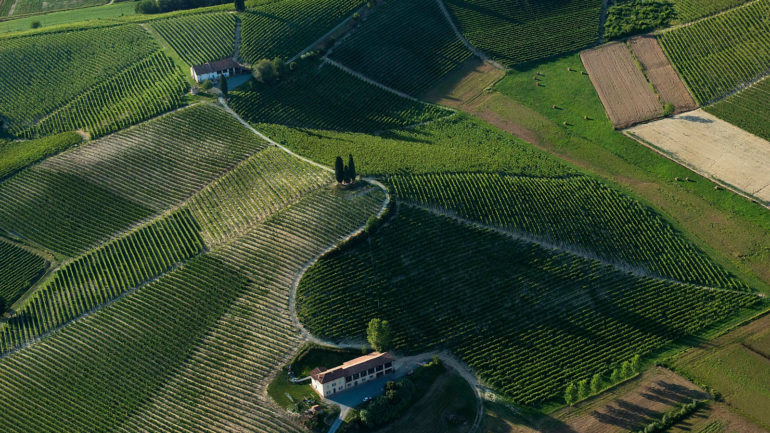
Leave a Reply